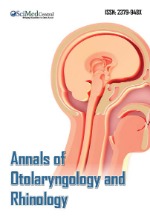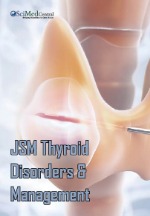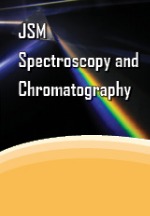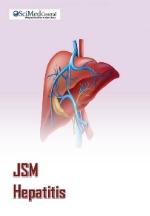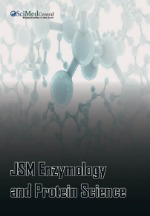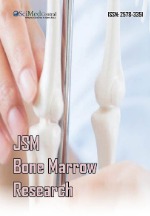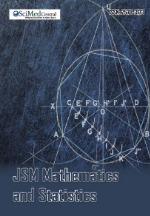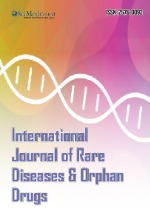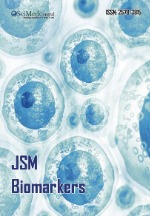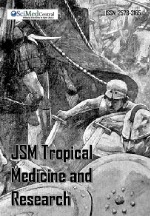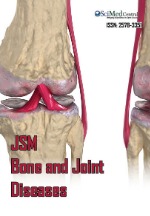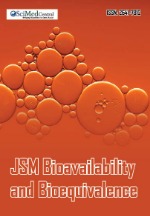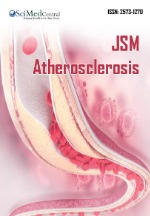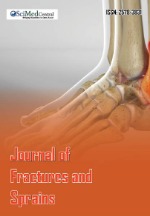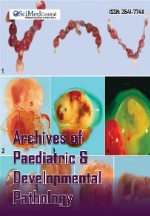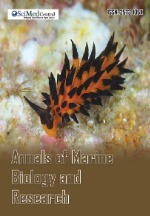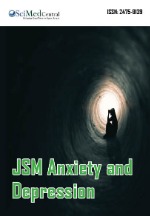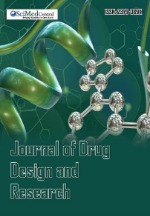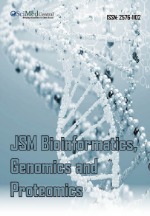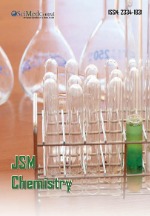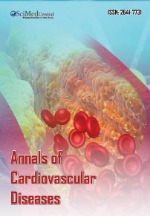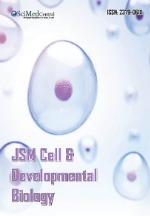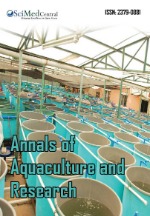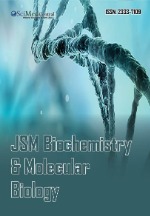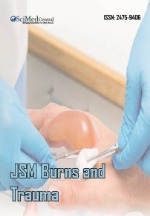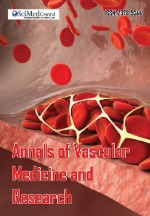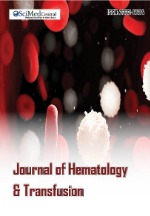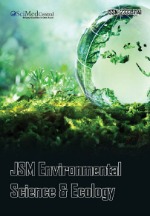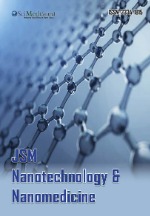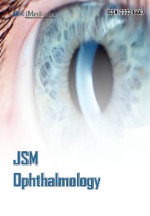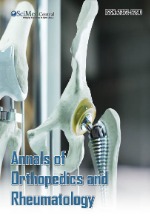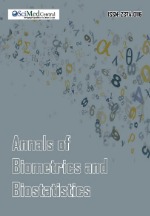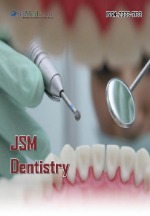Study of Physical Properties of Zinc Oxide Thin Films Using the Hydrothermal Method
- 1. Department of Physics, Al-Baha University, Kingdom of Saudi Arabia
Abstract
In this manuscript, Description the response of a material application of optical properties to simplify values and to processing the results of experience to find the optical properties of some samples of for zinc oxide, and a new method was found for the transmission of electrons and charge carriers when studying the absorption coefficient of the sample prepared from zinc oxide. This method of transmission is compatible with direct electronic transmission. The characteristics of this case are important because they are responsible for electrical conductivity.
KEYWORDS
- Zinc oxide
- Thin films
- Optical properties
- Refractive index
CITATION
Tayfor MSE (2024) Study of Physical Properties of Zinc Oxide Thin Films Using the Hydrothermal Method. J Materials Applied Sci 5(2): 1013.
INTRODUCTION
Today, the study of materials deposited in thin layers is one of the appropriate means to know many of their physical and chemical properties [1-3]. whose properties are difficult to obtain in their natural form. the transparent conducting oxides have found importance among researchers thanks to their dual property [2]. as they possess high transparency in the visual field, in addition to their good electrical conductivity [4]. And in recent years’ scientific research focused on the study and preparation of thin layers of transparent conductive binary and triple oxides, including: zinc oxide with the increase in scientific and technological progress, the methods of preparing thin layers developed, and became highly accurate in determining the thickness and homogeneity of the membrane [5]. Hydrothermal Among these properties are the structural and optical properties of these thin films composed of zinc oxide (Figure 1).
Figure 1: Illustration of the hydrothermal growth method
From this logic, the following question arises what are the important parameters that affect growth in the hydrothermal method, and which also determine the condition for selecting substrates for the development of devices, for example the degree of Low operating temperature using polymer-coated plastic and paper as substrates, this led us to perform several growth experiments under different conditions such as pH, temperature, precursor concentration and time to rationally control the morphology of the nanostructures, In this manuscript, the structural properties of thin films of zinc oxide were also studied. The study of the structural properties of the membranes contributes to determining the identity of the obtained films, from the nature and systems of their paving and the type of crystalline levels. thin film materials and other effects [7]. The electrical properties of a thin film of zinc oxide were also studied due to the importance of electrical properties, since 1970 interest began in studying the electrical properties of transparent conducting oxides [8] so that the oxides are classified according to the electrical properties as semiconductors with a relatively large energy gap, and the transparent oxides are characterized by a forbidden band wide (energy gap) change from 3eV to 5eV this gap depends on several factors, including: the type of solution compounds, as well as the method of sedimentation and the experimental conditions for sedimentation [9]. the manuscript also dealt with the mobility of charge carriers (electrons and holes), which is an important and influential factor on the phenomenon of electrical conduction, so that an increase in this factor leads to an improvement in the electrical properties of the transparent conducting oxide, the mobility of charge carriers depends mainly on the spread of charge carriers in the crystalline lattice of the material. In fact, a large increase in the concentration of charge carriers reduces the value of mobility as a result of collision, and thus the conductivity with them decreases [10,11], As mentioned, mobility is a necessary factor for good conductivity.
MATERIALS AND METHOD
Materials Synthesis
The methods used in this work to synthesize nanostructured materials. Used the hydrothermal method to synthesis Zn0 nanostructures. The focus and idea of this chapter is to mention important parameters affecting the growth in the hydrothermal method, which also set the condition for the choice of substrates for the development of devices, e.g. low operating temperature allows us to use polymer coated plastic and paper as substrates. This has led us to conduct several growth experiments under different conditions such as pH, temperature, precursor concentration, and time to rationally get control over the morphology of the nanostructures.
Substrate pre-treatment
The pre-treatment conditions of the substrate for the growth process, such as the pre-cleaning, concentration of the seed colloid, spin coating times, and annealing treatment of the substrate were the most important steps and had their respective influence on the morphology and quality of the Zn0 nanostructures.
Substrate pre-cleaning
Prior to growth we immerse the substrate in is-propanol and acetone in an ultrasonic bath each for 10 min and subsequently washed them with de-ionized water and then flushed them with nitrogen air. For Si substrate, one extra-step was required for removing the native oxide by immersing the substrate into diluted hydrofluoric acid (HF) solution (HF: water, 1:10) for 5 min, followed by washing in de-ionized water. Once the oxide layer was removed the grey color of the silicon surface visually appears.
Seed layer for Zn0 nanostructures
One of the advantages of the hydrothermal method is the use of a seed layer prior to the growth in the form of nanoparticles or thin films, Different solvents and precursors are being used for the preparation of the seed solution. We have chosen two different seed solutions in our work for making the seed layers. We prepared first the seed solution by dissolving 5 mm of zinc acetate dehydrate (Zn(CH3COO)2 2H2O) in pure ethanol solution as previously reported by Green et al. We preferred the use of this seed for hard substrate because these substrates with spin coated seed layer need annealing at 250 C0 for 30 min. to decompose Zn(CH3COO)2 2H2O into Zn0 nanoparticles, For the second case, we dissolved 5 mm of Zn(CH3COO)2. 2H2O together with KOH in pure methanol solution prepared following the method developed by Pcholski et al. In this case annealing is not required for decomposition as it converts to Zn0 nanoparticles at room temperature and is therefore very suitable for soft and flexible substrates, In order to achieve Zn0 nanostructures growth, first spun coat (four times) the ZnO nucleation layer, at a speed of 3000 rpm for 30 seconds. During the growth, the ZnO nanostructures preferentially nucleate from the top of the nanoparticles grains. Tuning the spin speed enables the control of the density of nanoparticles on the substrate. In simple words, controlling the seed layer thickness or surface coverage can provide a good control of the alignment for the growth and density of the nanostructures.
ZnO hydrothermal growth
There are several high and low temperatures ZnO and CuO nanostructures growth methods and both have some advantages and disadvantages. Comparatively hydrothermal methods are attractive due to many reasons. This method attained much interest in the scientific community when Vayssieres et al., successfully demonstrated the growth of ZnO microstructures on a glass substrate. It does not require sophisticated equipment; it is low cost, environment friendly, and thus suitable for scale- up. Different morphologies of the nanostructures can be readily obtained by tuning the hydrothermal conditions. In addition, the hydrothermal growth occurs at very low temperature and therefore holds great promise for nanostructures synthesis on a variety of flexible/soft plastic and paper substrates. The hydrothermal method has been demonstrated as a powerful and versatile method for synthesizing metal oxide nanostructures and so has been reported in the fabrication of electronic and sensing devices. The functioning of these devices is critically linked to the morphology of the nanostructures and hence requires tuning of the growth parameters for the optimal performance. In this thesis, we have synthesized ZnO Nano rods, nanotubes flower- like, urchin-like nanostructures, CuO nanoflowers, and ZnO/ CuO corals shape structures by the same method, the schematic diagram of the hydrothermal growth procedure is shown in Figure 1.
Experimental details
The experimental details of this work as shown in the following the sample which were prepared from ZnO and following steps from the measurements optical properties of this samples were carried out at room temperature using Shimadzu UV-VIS-1240 scanning spectrophotometer in the wavelength range from - to - nm. The substrate absorption is corrected by introducing an uncoated cleaned glass substrate in the reference beam.
Ultraviolet – visible spectrometer: The visible spectra obtained in shimadzo mini 1240 spectrophotometer scanning between 200 -1200 nm. The spectrophotometer measures how much of the light is absorbed by the sample. the intensity of light before e going into a certain sample is symbolized by Io. The intensity of light remaining after it had gone through the sample is symbolized by I. the fraction of light transmitted is (Io/I) which is usually expressed as percent transmittance (%T) from this information, the absorbance of the sample is determined for that wavelength or as function for ranger of wavelength. sophisticated UV/visible spectrophotometers often do this automatically (Figure 2).
Figure 2: UV/Vis spectrophotometer
Although the sample could be solid (or even gaseous, they are usually liquid). A transparent cell, often called cavetti. It used to hold a liquid sample in spectrophotometer. The path length L through the sample is then the width of the cell through which the light passes through. Simple (economic) spectrophotometer may use cavetti shape like cylindrical test tubes, but more sophisticated one-use rectangular cavity common 1cm in width for just visible spectroscopy, ordinary glass cavity may be used, but ultraviolet spectroscopy requires special cavities made of UV transparent materials such as quartz. An ultraviolet visible spectrum is essentially a graph of light absorbance vs. Wave length in arrange of ultraviolet or visible regions.
RESULTS AND DISSOCIATION
Results
The sample of ZnO were impacted by the U.V spectrometers to measure their absorption spectrum. The optical parameters are calculated. The outcomes were:
Dissociation
Absorbance’s The relation between absorbance and wavelengths, the behavior of curves for the ZnO is found by studied using UV-VS min 1240 spectrophotometer. Show all resolute of absorbance in Figure 3.1. Also Figure 3.1 shows the relation between absorbance and wavelengths, also found the behavior of ZnO sample the rapid increase of the absorption in the wavelengths (360 nm).
Figure 3.1: Relationship between absorbance and wavelength of Zn O
Absorption coefficient (α): The absorption coefficient (α) of the prepared sample were found from the following relation α = 2.303 A/t. Where (A) is the absorbance and (t) is the optical length in the sample. In Figure 3.2
Figure 3.2: Relationship between absorbance Coefficient and wavelength of Zn O
shows the plot of (α) with wavelength (λ) of Zn O, which obtained that the value of α >4.48x106 cm-1 for the samples in the U.V region, this means that the transition must corresponding to a direct electronic transition, and the properties of this state are important since they are responsible for electrical conduction.
Transmittance: Figure 3.3 shows the transmission, discussed the ranged (300 to 500 nm). From Figure 3.3,
Figure 3.3: Relationship between Reflection and wavelength of Zn O
the transmittance spectra (decrease) from the sample Zn O and the curves reach’s saturation above (330 and 440 nm) the average transmittance of the sample is 13.2 %.
Reflectance: In Figure 3.4 show the reflectance spectra of ZnO sample and it has a maximum value at region (252 nm) and the value of reflectance is 28 %.
Figure 3.4: Relationship between Reflection and wavelength of Zn O
The refractive index (n): The refractive index (n) is the relative between speeds of light in vacuum to its speed in material which does not absorb this light. The value of (n) was calculated from the equation n = {[(1+R )/ (1-R)]2 – (1-K2)}1/2 - [( 1+R )/ (1- R )] . Where (R) is the reflectivity. The variation of (n) vs (λ) for ZnO sample was treetetment is shown in Figure 3.5. Figure 3.5 the relationship between Refractive Index and wavelength of ZnO sample which shows that the maximum value of (n) is (5.76) at wavelength 730nm. Also we can show that the value of (n) begin to decrease in the (720-360 nm) region of spectrum which is agreement with ref.
Figure 3.5: Rrelationship between Refractive Index and wavelength of Zn O
The optical energy gap (Eg): The optical energy gap (Eg) has been calculated by the relation (ahυ)2 = c(hυ - Eg) where (C) is constant. By plotting (ahυ) vs photon energy (hυ) as shown in Figure 3.6 for ZnO sample treetetment. And by extrapolating the straight thin portion of the curve to intercept the energy axis, the value of the energy gap has been calculated. In Figure 3.6 the value of (Eg) of ZnO sample obtained was (3.54) eV.
Figure 3.6: The optical energy gap (Eg) of Zn O
CONCLUSION
The materials investigated here are ZnO, which are the oxides of earth-abundant materials. A variety of ZnO nanostructures were prepared by a simple and low cost hydrothermal method. The optical properties of the as deposited nanostructures have been investigated in detail. The absorption coefficient (α) of the Zn O sample were found value is α>4.48x106 cm-1 in the U.V region, the transmission saturation above (330 and 440 nm) the average transmittance of the sample is 13.2 %, the reflectance spectra of Zn O sample and it has a maximum value at region (252 nm) and the value of reflectance is 28 %. The maximum value of (n) is (5.76) at wavelength 730 nm also we can show that the value of (n) begin to decrease in the (720-360 nm) region of spectrum which is agreement with ref. The value of (Eg) of Zn O sample obtained was (3.54) eV.
REFERENCES
- Zhiyong Fan, Jia G Lu. ‘Zinc Oxide Nanostructures: Synthesis and Properties’. J Nanosci Nanotechnol. 2005; 10: 1561-73.
- Periasamy C,Prakash R, Chakrabarti P.”Effect of post annealing on structural and optical properties of ZnO thin films deposited by vacuum coating technique”, Journal of Materials Science: Materials in Electronics. 2010; 21:309-315.
- Papadopoulos N, Qiu W, Ameys M, Smout S, Willegems M, Deroo F. et al.Touchscreen tags based on thin-film electronics for the Internet of Everything. Nat. Electron 2019; 12: 606-611.
- Caglar M, Caglar Y, Ilican S. “The determination of the thickness and optical constants of the ZnO crystalline thin film by using envelope method”, Journal of Optoelectronics and Advanced Materials. 2006; 8: 1410-1413.
- Gordon RG.” Criteria for choosing Transparent Conductors. Mrs Bulletin. 2000; 25: 52-57.
- Chena J,Wanga J. The effect of La doping concentration on the properties of zinc oxide films prepared by the sol–gel method, Journal of Crystal Growth. 2008; 310: 2627–2632.
- Bouznit Y, Beggah Y. Yninebb F. Sprayed lanthanum doped zinc oxide thin films. Applied Surface Science. 2012; 258: 2967-2071.
- Chena J,Wanga J. The effect of La doping concentration on the properties of zinc oxide films prepared by the sol–gel method, Journal of Crystal Growth. 2008; 310: 2627–2632.
- Ferro R, Rodriguez J.A. “Study of Some Optical Properties of CdO:F Thin Films”,J. Phys. State. Sol. (b). 2000; 220: 299.
- Fitzgerald C B, Venkatesan M, Lunney J G, Dorneles L S, Coey JMD. “Cobaltdoped ZnO– a room temperature dilute magnetic semiconductor”. Applied Surface Science. 2005; 247: 493-496.
- Wei L, Li Z, Zhang W F. “Influence of Codoping content on its valence state in Zn1-xCoxO (0 ≤x ≤ 0.15) thin films”. Applied Surface Science. 2009; 255: 4992-4995.










